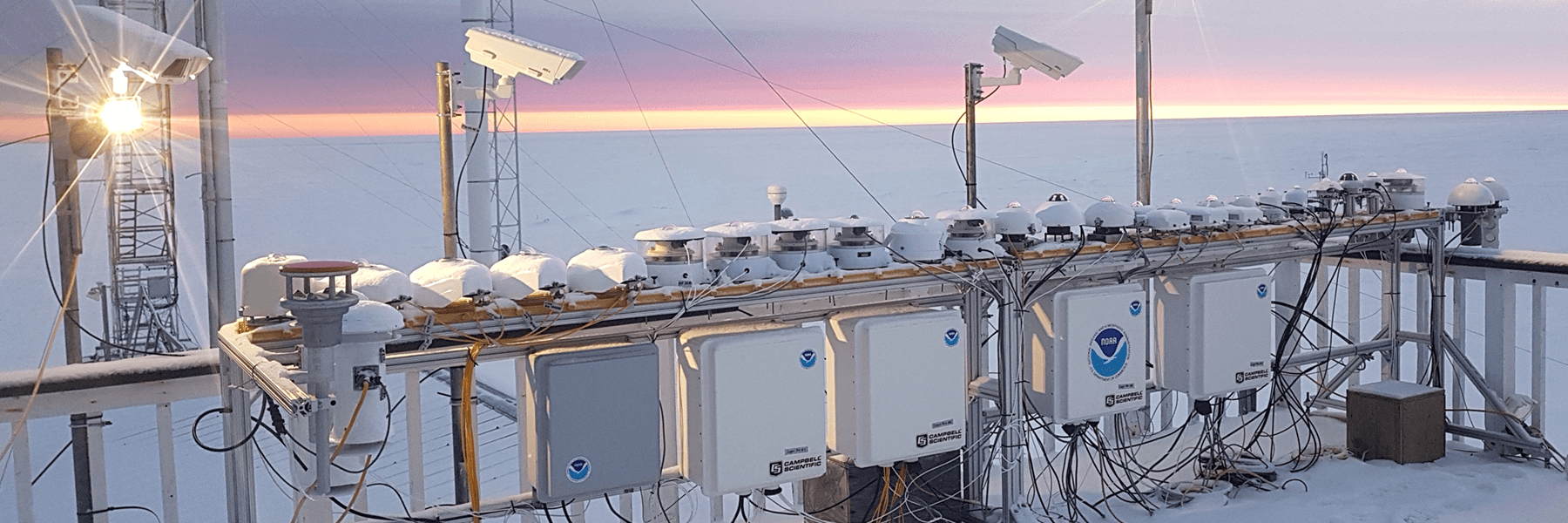De-Icing the Icing Problem: Experiment provides information to help improve observations in cold climates

Arctic conditions make observing the atmosphere challenging. Icing of instrumentation causes measurement errors and results in lost data. Radiometers, which measure solar and infrared energy, are critical for monitoring environmental change and understanding the processes that regulate the Earth system, but they are particularly vulnerable to ice. The problem has been recognized for decades and design features for mitigating ice have been developed, but the errors remain largely unknown without co-located, ice-free measurements for comparison. Affected data is difficult to identify in post-processing, and the effectiveness of mitigation technology has not been tested. NOAA and CIRES researchers at the Pysical Sciences Laboratory and Global Monitoring Laboratory (GML), in collaboration with members of the Baseline Surface Radiation Network (BSRN) set out to address these issues with the De-Icing Comparison Experiment (D-ICE). A new article to be published in the journal Atmospheric Measurement Techniques discusses the experiment and its outcomes.
For the 2017-2018 winter, D-ICE deployed a large number of radiometers making use of various models of ventilators and heating technology to mitigate ice at the GML Barrow Baseline Atmospheric Observatory near Utqiaġvik, Alaska. The tested systems were supplied by collaborators within the BSRN community. The systems were monitored continuously with cameras and both the images and measured data were analyzed. Overall, the systems were found to be effective in preventing ice from forming most of the time. A continuous ice-free data set was assembled from the combined ice-free sensors that was used as a baseline for comparison to iced sensors. Large errors were found instantaneously.
The study identified the sky and icing conditions responsible for the size and sign of errors. A counter-intuitive observation that ventilation without heating can prevent ice was linked to a combination of waste heat from ventilator fans and the compression of air downstream of the fans. In the monthly averages, errors were found to be surprisingly small, which was due to the general effectiveness of the ice mitigation, fortuitous timing of the occurrence of icing conditions, and frequent cloud cover, which suppresses errors.
The findings suggest that low-power solutions without heaters are viable. This is a positive development for remotely-controlled system deployments, for example providing valuable insight leading to success during the recent international Multidisciplinary drifting Observatory for the Study of Arctic Climate (MOSAiC) expedition. The findings also support long-term measurement programs, such as BSRN, in interpretation of data already collected as well as providing guidance for making more robust measurements. BSRN in turn produces ground-truthing benchmarks for satellites and climate models as well as climate-related research. Finally, results are supportive of industry research and development that is supportive of science and renewable energy production.
Authors of the Atmos. Meas. Tech. article The De-Icing Comparison Experiment (D-ICE): A study of broadband radiometric measurements under icing conditions in the Arctic are: Christopher Cox, Sara Morris, and Taneil Uttal, Ross Burgener, Emiel Hall, Mark Kutchenreiter, Allison McComiskey, Charles N. Long, Bryan D. Thomas, and James Wendell.
Posted: February 2, 2021